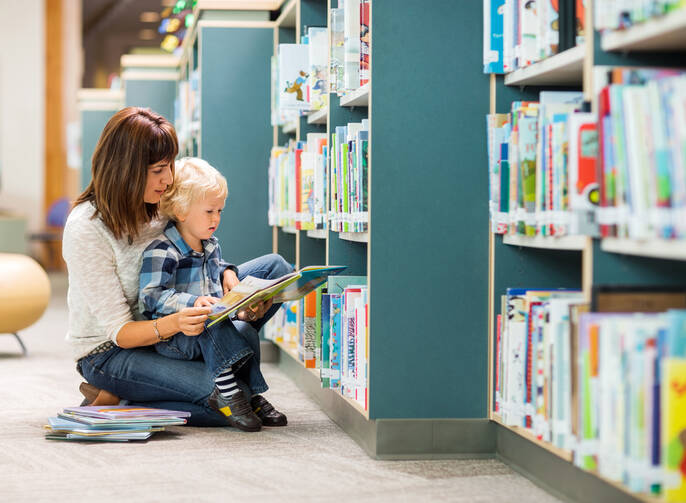I recently received a notice that the last week in January will be known as “National School Choice Week.” Centered in Florida, the celebration would spread throughout the country with 11,000 events in 50 states, the largest in U.S. history, in order to “shine a positive spotlight” on education options for children. The celebration includes, it says, traditional public schools, public charter schools, public magnet schools, online learning, private schools and homeschooling.
Since there is no question about the right of parents to use any one or combination of these means to educate their children, and since my own experience includes Blessed Sacrament grammar school in Trenton, St. Joe’s Prep in Philadelphia and Fordham, and I admire fellow Jesuits in Cristo Re and Nativity schools—all aimed at poor and disadvantaged students—I wondered why this sudden super-emphasis on “choice” was necessary.
I found some answers. It starts with the philosophy of its founder Milton Friedman (1912-2006) who came up with the idea in 1955. In a 2005 statement he emphasized that the enemy is the federal government. Without “choice” students are directed to the public school in their neighborhood. It is as if all automobiles were to be built in government factories. There goes your freedom to get the car you want. Or suppose you had to spend your food stamps in government-approved stores, again, freedom gone. The answer, he says, is to give an education allowance to the student and leave all schools free to set tuition rates and let everybody compete. The “best” schools would thrive and the others would die.
In response, Julianne Hing, on the “Colorlines” website, suggests we should be wary of National School Choice week. School choice, she says, “is the idea underlying movements toward deregulation, and the privatization, of the public education.” The market, the thinking goes, “can solve problems that government and public institutions have thus far failed to address.” It is also helpful, she says, to know who supports the deregulation of public education: the Heritage Foundation, Jeb Bush’s Foundation for Excellence and the Friedman Foundation for Educational Choice. Other sources list Sen. Ted Cruz (R. Texas), the Koch Brothers, Grover Norquist and big oil corporations.
Salon features a longer analysis (Alternet 2012) by Kristin Rawls. Some, including a president of a teachers’ union, grant that school choice is appropriate, for example, for magnet schools in poor neighborhoods, which offer courses in advanced arts or sciences not available in the big public schools. But, although it includes mainstream conservatives and Democrats, the school choice movement, Rawls argues, “at its core, a bipartisan endeavor.” “It pits parents against teachers, and it ultimately sidelines already marginalized children of immigrant families, poor children and/or children of color.” In short, she quotes a former teacher, a moderate Republican, who sees the movement based on “prejudice, xenophobia and racism.”
Defenders of the public school system, with all its problems, hold that public schools are the foundation of a democratic society; the schools not only teach a common curriculum but they introduce their students to an uncommon mix, particularly today, of boys and girls from varied backgrounds, rich and poor, born citizens and immigrants, adherents of many different religions. Some parents don’t see that as a plus. Some Christians believe public schools will “indoctrinate” their children with tolerance for gay people or with instruction that recognizes evolution as a viable scientific concept.
Andre Campanella, president of National School Choice Week (10/29/2014), responded to criticisms with a basic restatement of the goals of the week. “We do not take political positions. We are not involved in advocacy for or against any legislation. National School Choice is not a lobbying effort.” This event helps students and parents by celebrating the great work “choice” schools do.
Meanwhile, both The New York Times and Washington Post reported Saturday that most public school students are now living in poverty. The Southern Educational foundation tells us that 51 percent of students in pre-kindergarten through 12th grade in the 2012-2013 school year were eligible for the federal program that provides free and reduced-price lunches. This means that the majority of students arrive at school trailing their more-privileged, peers, less likely to have support at home, less exposed to culturally enriching activities and more likely to drop out. There are solutions to these social and economic problems, but they are not to be found by turning back the clock to Milton Friedman’s philosophy.








